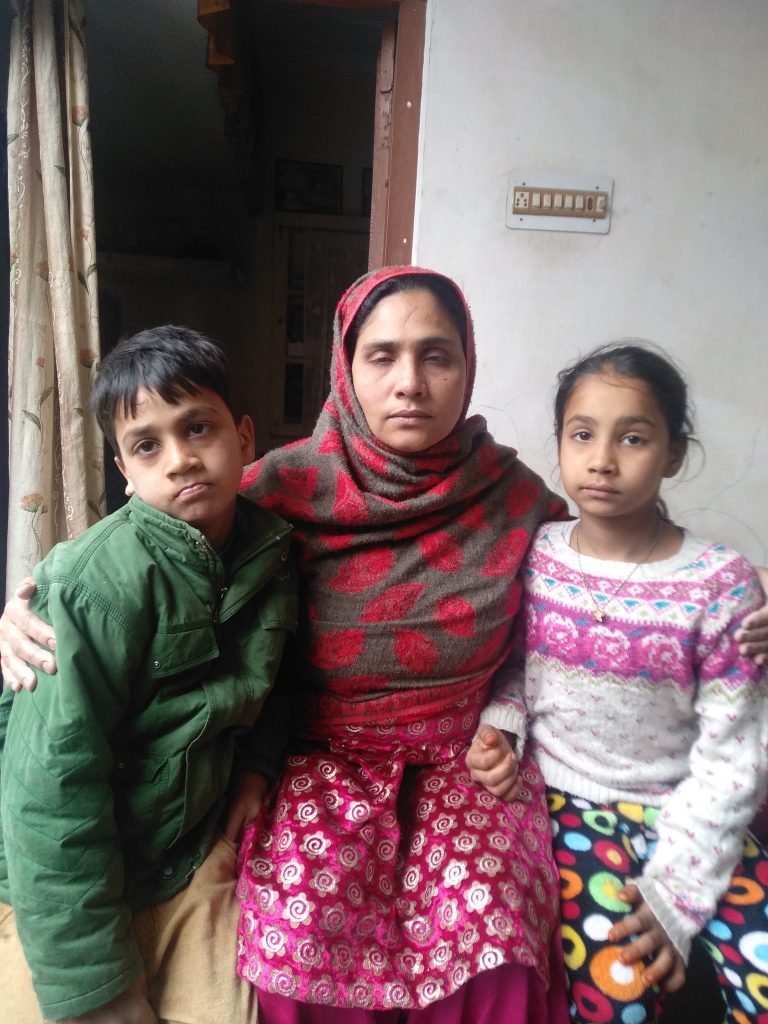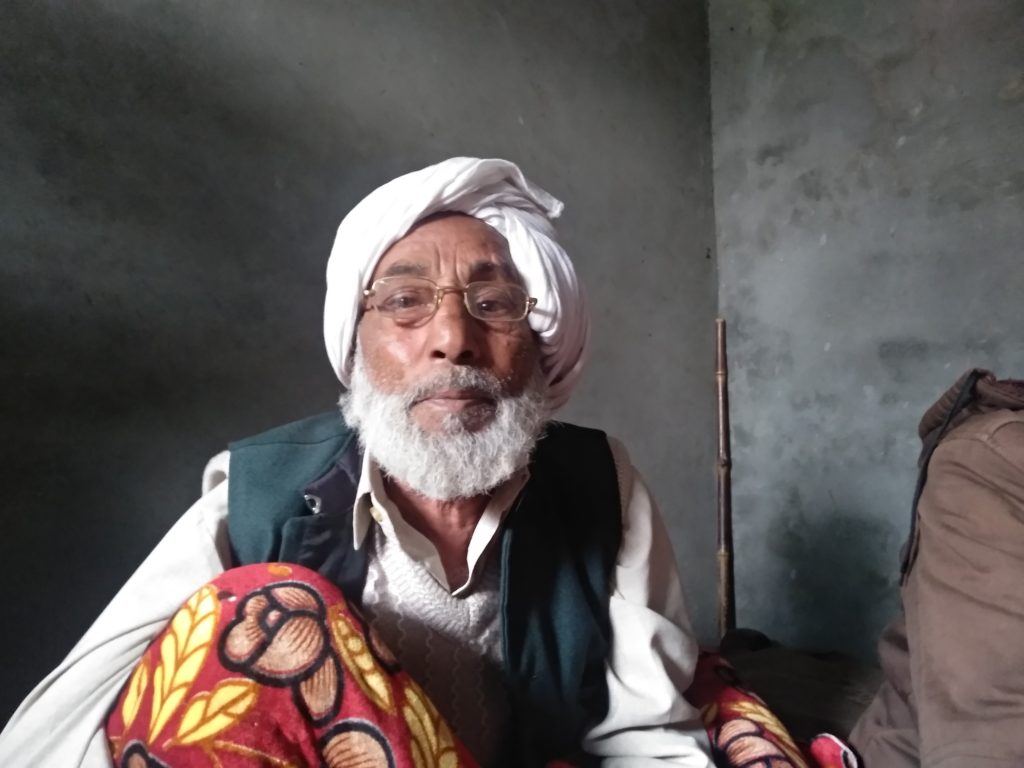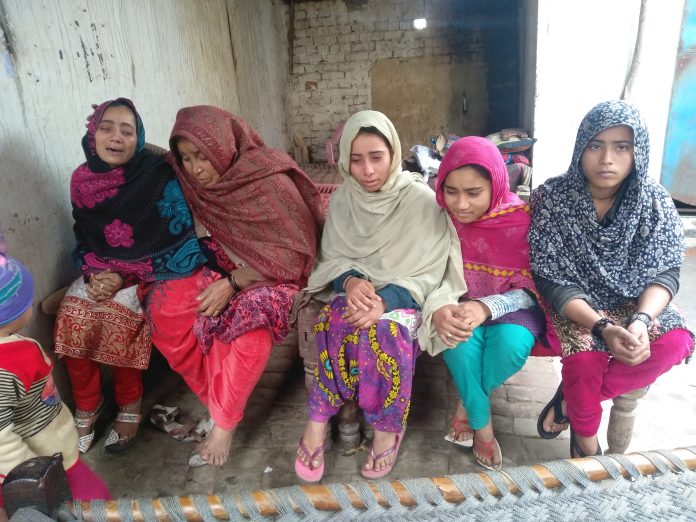By Aas Mohammad Kaif, TwoCircles.net
Six years have passed since the Muzaffarnagar riots. The violence that erupted after the ‘mahapanchayat’ of 7th September 2013, engulfed the neighbouring places too. The curfew in Muzaffarnagar lasted for a week. The army controlled the situation. As per Government figures, 65 people were left dead and hundreds injured. Thousands became homeless and a lot changed. The Jat-Muslim unity of western Uttar Pradesh collapsed. Some people got a lot of fame but the riot victims did not get justice. After these six years, the victims have lost any hope for the same.
Salim is 66 years old and his brother Nasim is 70. Salim now lives in shock, not talking to anyone. He Starts weeping all of a sudden. Nasim has lost his mental balance. Both belong to the Kawal village, which has earned a bad reputation for causing riots.
Salim is the father of the young man named Shahnawaz, who was murdered on the first day, while Naseem is the father of two youths who were accused of the murder of Gaurav and Sachin. Both Salim and Nasim are exhausted. Their four children are serving life imprisonment. Both Salim and Nasim remain secluded in the corners of their house. Their tears never stop.
This year has seen a lot of verdicts related to Muzaffarnagar riots. One verdict is related to the murder of Gaurav and Sachin. In this case, the four brothers of Shahnawaz was sentenced to life imprisonment. These four youths were jailed right after the riots. They could not get bail. Contrary to this case, the accused persons in the case of Shahnawaz were given a clean chit by the police. After a long legal battle, the accused persons were summoned in the court but within a month they are out on bail.

Recently, the father of Gaurav has surrendered before the court and has been sent to jail.
Salim, the father of Shahnawaz says, “I have never witnessed so much injustice in my entire life. My son was murdered and those who came to murder him were killed by the mob. My second son was going to Chennai and he had to return from Bellarshah. As soon as he returned, he was made criminal by the police and now he is serving the sentence. We fought for five years in the court but we were not heard anywhere and now the murderers of my son have got bail within 15 days.
The condition of Nasim, the elder brother of Salim, is worse. He keeps turning over a pile of papers. He talks very strangely and starts shouting sometimes. He says that he will not be able to see his sons lead a free life.
After more than 65 deaths in Muzaffarnagar riots, arson in hundreds of homes and feeing of thousands of people, if one wants to understand about the justice to the victims of the riot, one needs to look at the two similar incidents of Kaval in which accused persons were imprisoned for life in the first case whereas the police did not take any action in the second case. Even those who got arrested after five years of the incident secured bail in a fortnight.

Muzaffarnagar advocate Rao Laik tells us the reason behind the difference in the execution of both the cases. He says, “The decisions in the Court depend on the testimony and evidence. The police do the job of collecting evidence. Now in some cases, the police are highly interested and in other cases, they are influenced by politics. This is what happened in the case of Kaval, where one side advocated vigorously while the other side could not argue on similar lines”.
This is not limited to Kaval. Because of the efficient legal support and inaction of the police, all the accused in the Muzaffarnagar riots are now acquitted. Rao Laik wonders that now all that remains is that the accused side should not file a defamation case against the victims.
A retired teacher from Kidwainagar Mohalla in Muzaffarnagar refuses to disclose the name, but he says that some of his friends tell him that the Hindu leaders have assured the accused from getting into any kind of trouble. Most of the cases which the police had filed on behalf of the state are being withdrawn by the police. And those cases which the victims had registered on their own are falling flat due to lack of evidence and hence the accused persons are being set free.
Almost all cases of Muzaffarnagar riots with serious charges have indeed been disposed of. Most of these cases have been compromised. A social worker in Muzaffarnagar states, “When peace resumed in the aftermath of the Muzaffarnagar riots, both groups became active in paperwork. The well-wishers of the accused persons formed several groups to save the people who were booked for the riots. Many temporary offices were formed to execute the action plan. The liberal Jats worked towards the favourable decision and others adhered to the politics of pressure group.
Shahzeb Khan of Khalapar tells us that during this phase, the Muslims started collecting funds. He says that after the riots, the Akhilesh Yadav-led government of Uttar Pradesh put more than one and a half dozen Muslims in the lucrative posts such as Minister of State and sent them to the community for damage control. Instead of helping the riot victims in Muzaffarnagar, most Muslim leaders of the ruling party were busy with bootlicking in Lucknow. According to Farhad Alam, a Samajwadi Party leader and former state vice-president of the Yuvjan Sabha, many times he saw a crowd of such people around SP chief Mulayam Singh Yadav and Chief Minister Akhilesh Yadav. They used to ask them to go to Muzaffarnagar but their answer would be, “Your Highness, with what face do we go there!” After that many of them got red beacon govt vehicles, some got organization rank and some were made MLC.
Now, fingers are being pointed towards Azam Khan who did not visit the Muzaffarnagar victims either during the riots or even after that. National Secretary-General of Pasmanda Muslim Society, Anjum Ali Advocate says, “Since all the accused persons have been acquitted now, therefore leaders like Akhilesh Yadav and Azam Khan should answer for the acquittal because they had remained in power for four years after the Muzaffarnagar riots. The police made deliberations during Akhilesh’s tenure. Muslims should not complain about the BJP government because the BJP government has stood with their people. Objections and complaints should be raised against those Muslim and secular leaders who played politics with the Muslim votes. Why the cases were tried in the fast track courts? Who will answer now? After all, who caused such a huge riot? How did these people die? Did they commit suicide or set their own house on fire! ”
The role of some influential people associated with the local Muslim community and the outcome of most of the cases of Muzaffarnagar cannot be overlooked. It is shocking to know about some unrevealed facts which include the mention of some religious leaders. Only the victim’s family is not to be blamed for not giving testimony. Some people of their community pressurized, lured or inspired them. Most of them were people belonging to a particular party.
Maulana Musa Kasami, secretary of Jamiat Ulema Hind, believes that the whole matter is about proper legal representation. The names of 45 of the 69 accused persons of murder were not included in the main charge sheet. The case proceeded against 24. The witnesses turned hostile. The fact is that the victims are weak and poor people. Their courage is broken.
For example, two similar incidents lead to different results. Two persons from Sadarpur were killed at the turning of Mujheda in Meerapur while returning from the Mahapanchayat on that day. Cases are going against almost a dozens of people from Mujheda. Just after this incident, the accused persons named in the murder of Nadeem of the nearby village of Sikareda and Monu Qureshi of Meerapur’s Padao Chowk were acquitted.
Nadeem’s uncle now lives in Kethoda village while his father has moved to Tevada. Nadeem’s uncle Irshad, while sharing the agony, says, “Nadeem was married just 6 months before the riots and during the riots, we had to flee from the village at night while Nadeem got killed. His wife got a government job and monetary compensation as well. After this, she left her old in-laws. They had no other son. They live in a colony for riot victims near Tevda village. There is no money to buy food. Now in this situation, how would they fight the case? A local leader made them enter a compromise with the accused persons. How could they fight! Their son is no more, their house was destroyed, their daughter-in-law took away what the government gave them. They had neither strength nor courage.”
Advocate Bilkis Chaudhary, the Congress District President says that the government should have stood with the victim when the victims were helpless.
Statistics show that in most of the cases, the police did not recover even a single murder weapon and all the cases depended entirely on the testimony. It is well known that in Muzaffarnagar, the chests of strong witnesses have also been pierced.
Bilkis says, “Leaving aside the evidence and deliberation, during the riots, a certain group of people in the police were standing openly with one side – the attackers and shooting. These photographs were printed in the newspapers. There was little hope of deliberations from such police officials, but what did the representatives of the government and petty politicians do at that point of time?
The most affected in the Muzaffarnagar riots was the Budhana Vidhan Sabha. At that time, Nawazish Alam Khan of the Samajwadi Party was the MLA. The name of former MP Amir Alam, father of Navazish, was highly discussed at that time. He was accused of removing the DM and SSP through the political influence of Azam Khan.
Salim Ahmad of Shahpur tells us, “I don’t think he would have helped anybody because Nawazish Alam had kept his phone off during the whole riots. Muslim villages were being attacked but they did not come forward to help. Although Akram Khan of Shahpur also says, “The image of Amir Alam has never been communal. He was maligned under a conspiracy and he got trapped and so far he has not been able to get out of that duality”.
It is not just about Amir Alam but the resentment of many Muslim leaders is still seen in the local people. As Wajid Tyagi of Charathaval says, “Qadir Rana was giving one crore rupees and a bungalow to Chaudhary Ajit Singh to contest elections. Now he has to tell us that what efforts have been put in to give relief and justice to the riot victims?”
For example, a large colony of riot victims was established in Loi village on Shamli road from Budhana. These people came from villages like Fugana, Mohammadpur Raisingh and took shelter here. Jamiat Ulema Hind constructed colonies for them.
Muntazir from Loi Colony recalls a shocking event. He says, “The people of the local village do not allow our dead to be buried in their cemeteries. They say that we should buy our land, although initially, they were sympathetic to us, but now they consider us as second-class and look at us in a very resentful manner.”
The problem of the riot victims is not just about Loi, but also of the Jaula. The then VC of Aligarh Muslim University, Zameeruddin Shah announced to build a school for the riot victims in the village of Jaula. More than a crore has been spent to build schools here. The land was donated by a farmer and the school was built. Right now the children of the rich are studying in the school. According to the former District Panchayat member of the district, Mehboob Ali, the school has high fees and the children of the riot victims cannot afford it. Meharban, a riot victim says, “We were poor in the villages of the Jat and we are poor here also. People helped us a lot but we did not get justice. We have no complaints with anyone. Allah will take revenge”.
The first decision in the Muzaffarnagar riots was in the gang rape cases. Police had already put the final report in most of the cases. Some women riot victims in Kairana’s Malkapur camp had said to have been gang-raped. Seven such women had filed the case. They were all from the Muslim community. One of them, Fatima (name changed) from Fugana village was gang-raped by four men. The rapists were from the same village. Fatima claimed that there were attempts to intimidate and lure her family.
Due to the efforts of Rehana Adeeb, the chairperson of Astitva, a social organization, all these women came forward to register the case. She says, “The first thing is that the Shamli district court is still in Muzaffarnagar. The accused go to court by car. The travel is more hurtful to the women victims. They are constantly threatened and their families are lured.” Their community too could not give them courage. The victims believe that they did not get the support as expected. On the other hand, the riot accused has not been deserted by their community. Their entire community stood with them. The Muzaffarnagar MP Sanjeev Balian reached out to refugees living in Shahpur Basti who were living there after the violence in village Kutba and requested them to return to the village.
Muntiaz Saifi from Shahpur, which is a riot-affected hamlet says, “He came and presented salutations and sat down near the feet of the elderly. He regretted the loss in the riots and requested to return to the village. We understood his intentions, he wanted to get results from the case. We did not go back but now we do not even want to fight the case. What will we achieve by fighting! “


